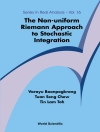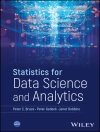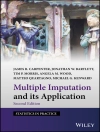Geo-mathematical modelling: models from complexity science
Sir Alan Wilson, Centre for Advanced Spatial Analysis, University College London
Mathematical and computer models for a complexity science tool kit
Geographical systems are characterised by locations, activities at locations, interactions between them and the infrastructures that carry these activities and flows. They can be described at a great variety of scales, from individuals and organisations to countries. Our understanding, often partial, of these entities, and in many cases this understanding is represented in theories and associated mathematical models.
In this book, the main examples are models that represent elements of the global system covering such topics as trade, migration, security and development aid together with examples at finer scales. This provides an effective toolkit that can not only be applied to global systems, but more widely in the modelling of complex systems. All complex systems involve nonlinearities involving path dependence and the possibility of phase changes and this makes the mathematical aspects particularly interesting. It is through these mechanisms that new structures can be seen to ‘emerge’, and hence the current notion of ‘emergent behaviour’. The range of models demonstrated include account-based models and biproportional fitting, structural dynamics, space-time statistical analysis, real-time response models, Lotka-Volterra models representing ‘war’, agent-based models, epidemiology and reaction-diffusion approaches, game theory, network models and finally, integrated models.
Geo-mathematical modelling:
* Presents mathematical models with spatial dimensions.
* Provides representations of path dependence and phase changes.
* Illustrates complexity science using models of trade, migration, security and development aid.
* Demonstrates how generic models from the complexity science tool kit can each be applied in a variety of situations
This book is for practitioners and researchers in applied mathematics, geography, economics, and interdisciplinary fields such as regional science and complexity science. It can also be used as the basis of a modelling course for postgraduate students.
Tabla de materias
Notes on Contributors
Preface
Acknowledgements
About the companion website
Part 1. Approaches
Chapter 1. The tool kit
Alan Wilson
Part 2. Estimating missing data: biproportional fitting and principal components’ analysis
Chapter 2. Inter-regional migration in Europe in relation to economic and labour market inequalities
Adam Dennett
Chapter 3. International trade flows
Simone Caschili and Alan Wilson
Chapter 4. Service flows in inter-regional input-output models
Rob Levy and Alan Wilson
Chapter 5. A method for estimating unknown national input-output tables using limited data
Thomas Oléron Evans and Rob Levy
Part 3. Dynamics in account-based models
Chapter 6. A dynamic global trade model
Hannah M. Fry, Alan Wilson and Frank
Chapter 7. Global dynamical modelling
Anthony Korte and Alan Wilson
Part 4. Space-time statistical analysis
Chapter 8. Space-time analysis of point patterns in Crime and Security events
Toby Davies, Shane Johnson, Alex Braithwaite and Elio Marchione
Part 5. Real time response models
Chapter 9. The London riots-1: epidemiology, spatial interaction and probability of arrest
Toby Davies, Hannah M. Fry, Alan Wilson and Steven Bishop
Chapter 10. The London riots-2: a discrete choice model/ an agent-based model
eter Baudains, Alex Braithwaite and Shane Johnson
Part 6. The mathematics of war
Chapter 11. Richardson models with space
Peter Baudains, Alex Braithwaite, Hannah M. Fry, Toby Davies, Alan Wilson and Steven R. Bishop
Part 7. Agent-based models
Chapter 12. Agent-based models of piracy
Elio Marchione, Shane Johnson and Alan Wilson
Chapter 13. A simple approach for the prediction of extinction events in multi-agent models
Thomas Oléron Evans, Steven R. Bishop and Frank T. Smith
Part 8. Diffusion models
Chapter 14. Urban agglomeration through the diffusion of investment impacts
Minette D’Lima, Francescs R. Medda and Alan Wilson
Part 9. Game theory
Chapter 15. From Colonel Blotto to Field Marshall Blotto
Peter Baudains, Toby Davies, Hannah M. Fry, and Alan Wilson
Chapter 16. Modelling strategic interactions in a global context
Janina Beiser
Chapter 17. A general framework for static, spatially explicit games of search and concealment
Thomas Oléron Evans, Steven R. Bishop and Frank T. Smith
Part 10. Networks
Chapter 18. Network evolution: a transport example
Francesca Pagliara, Alan Wilson and Valerio de Martinis
Chapter 19. The structure of global transportation networks
Sean Hanna, Joan Serras and Tasos Varoudis
Chapter 20. Trade networks and optimal consumption
Rob Downes and Rob Levy
Part 11. Integration
Chapter 21. Research priorities
Alan Wilson
Index
Sobre el autor
Alan Geoffrey Wilson, Centre for Advanced Spatial Analysis, University College London, UK. His research interests have been concerned with many aspects of mathematical modelling and the use of models in planning in relation to all aspects of cities and regions – including demography, economic input-output modelling, transport and locational structures. He was responsible for the introduction of a number of model building techniques which are now in common use internationally. These models have been widely used in areas such as transport planning. He made important contributions through the rigorous deployment of accounts’ concepts in demography and economic modelling. In recent years he has been particularly concerned with applications of dynamical systems theory in relation to the task of modelling the evolution of urban structure, initially described in Catastrophe theory and bifurcation: applications to urban and regional systems. His current research, supported by ESRC and EPSRC grants of around ?3M, is on the evolution of cities and the dynamics of global trade and migration.












